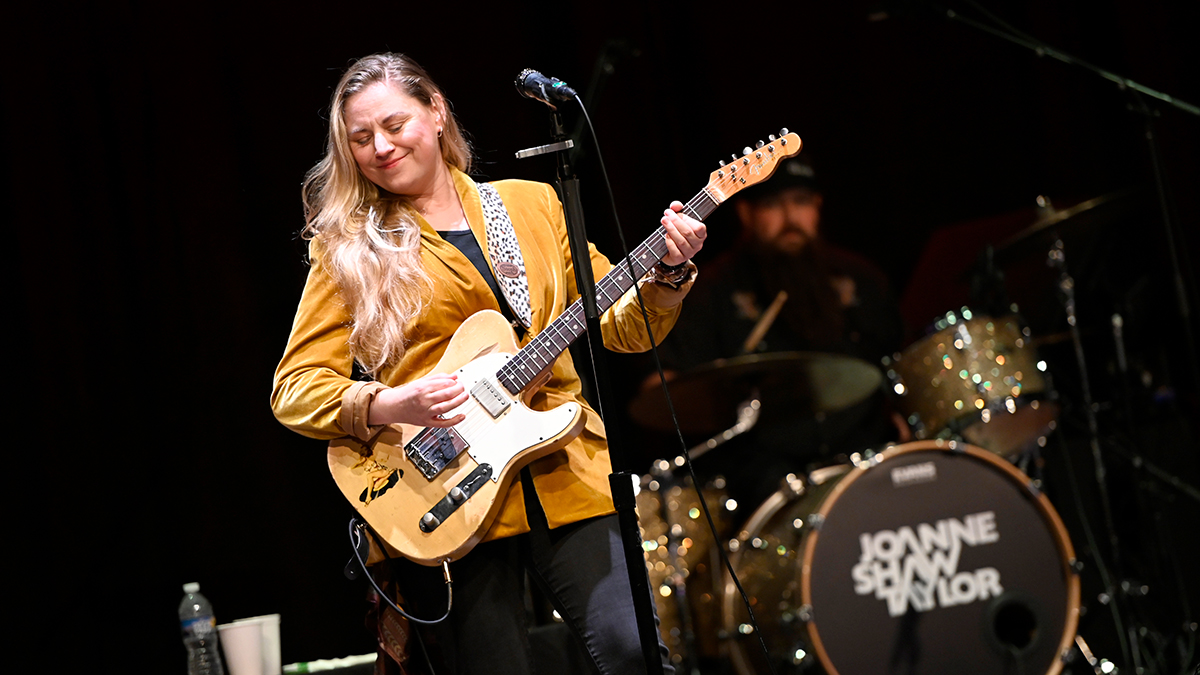“Many players think that the pickups are the main contributor to the way a guitar sounds… But if you change what the string does, that changes the guitar”: How Andy Powers rethought electric guitar design for the Powers Electric A-Type
An all-new electric from the man who makes Taylor one of the biggest names in acoustic design, the A-Type is typically high-end, thoroughly original, and might well be a modern classic in the making
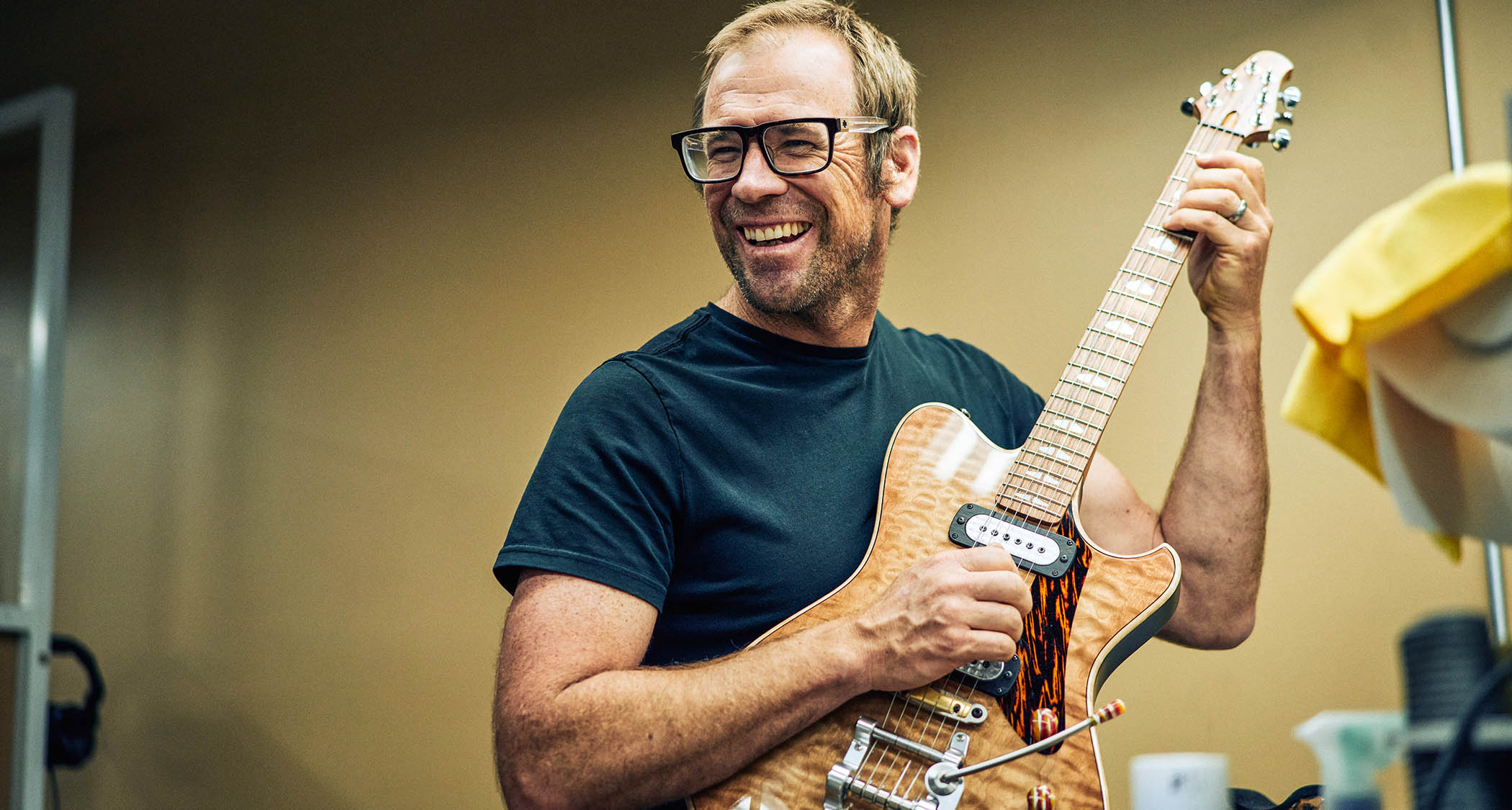
Let’s be honest, it’s pretty easy to trace most new guitar designs back to a few classic guitars: the usual suspects. Everywhere you look there are ‘inspired by’ or pretty direct copies masquerading as new designs. While that can be fun, comfortable and very often quite a success on the sound and playability front, it’s not exactly bringing anything new to the table.
The Powers Electric A-Type, you could argue, is one of the more original takes on the electric guitar with a raft of new design elements that seem to encompass old style with contemporary function. But where did the design start – and why? Time to dig deep with the company’s founder, Andy Powers…
You’re the master guitar designer at Taylor Guitars. Why on earth would you want to start a new guitar company making electric guitars?
“You know, this might come as a total shock, but I really like guitars [laughs]. I like the design of them, I like what they do; I like different kinds of guitars, different sounds, different feels. But when I play them I also understand there’s a different thing for each one.
“There’s a certain language you can speak within the realm of a design. The vocabulary might be curves, shapes, textures, the materials, the aesthetic of a design, but there’s a certain language that goes with all of that.”

“So when I wanted to make an electric guitar, it was very much like creating the electric guitar I wanted to own when I was 13, but it never existed so I played with all sorts of other things, built other things. In a way I went back and built the guitar I would have wanted to have.
“But the A-Type is a totally different thing: a different style of building, a completely different aesthetic compared with what I would do for a Taylor flat-top acoustic design.”
All the latest guitar news, interviews, lessons, reviews, deals and more, direct to your inbox!
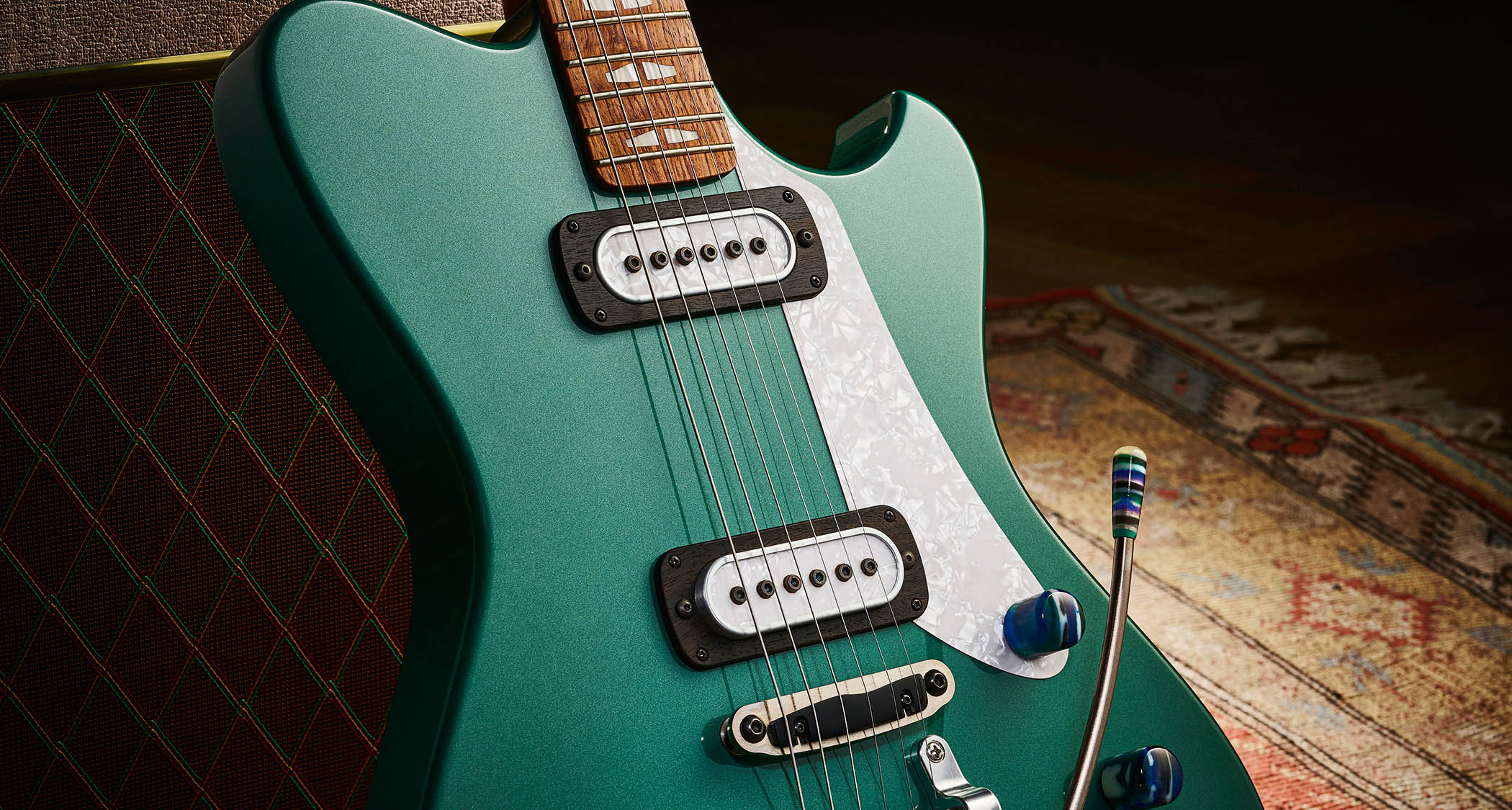
But there is some Taylor DNA here, isn’t there? The scale length, the hollow thinline body of the T5, for example. Obviously, the SoCal sunshine and surf. It’s even in that clear single-coil voice that the A-Type has.
“Yes, it is very Southern California: a product of where I grew up. It was one of the mental tricks I played on myself when I was designing it.
The A-Type is a totally different thing from a Taylor flat-top acoustic design
“I see Southern California as the birthplace of the modern electric guitar and I think it’s heavily influenced by the car craft automotive culture, the surfing and skateboard culture, of course the music culture – a lot of these things we think of as post-WWII Southern California culture. So I thought, ‘What if I were alive back then, living where I live right now, what would I have designed?’
“There were no parts catalogues to order from, we would have had no preconceived notion of what the thing is, or how it should get made, or the direction it should go. It was like entering a parallel universe: if I had been there, what would I have done, what would I have made?”
You could argue, with a little time travel, you’ve just gone back and met up with Paul Bigsby and said, “Hey, don’t do what you’re doing. I’ve got all these CNC milling machines and modern equipment and plenty of people that know how to use them. We can make you a guitar.”
“Yes [laughs]. But funnily enough, I didn’t start that way. I built the first one in my house workshop. Every component I started making on my Bridgeport mill, manually working on stuff and thinking, ‘This is kinda fun.’
“I then brought the guitar to the Taylor ’shop and said, ‘Okay guys, this thing is really fun to play. We’ve got to make at least a couple of these. Let’s work out how we do it. See, we have a great team of machinists here, and hot-rodders. We’re a bunch of people that like making stuff! Let’s make this thing.’”
I’ve never seen a body done like this before. There’s no plywood in it; it’s a piece of ash for the main body that is capped with a braced, solid maple top
Why a hollow body? It’s almost like it’s a small, sealed-body archtop, isn’t it?
“Yeah, it sort of is. I’ve never seen a body done like this before. There’s no plywood in it; it’s a piece of ash for the main body that is capped with a braced, solid maple top. The maple top is very interesting; it’s very resonant, but it’s actually shaped like a sphere. It’s not just an arch, it’s actually a part of a sphere, and that curved armrest area is actually bent into the top. The whole top is then braced. So there is some acoustic engineering in this thing.
“Then, inside, there are two sound-posts, almost like a cello. So when I do that I have the resonance of a hollowbody guitar, that dynamic quality. It’s kinda loud and touch-sensitive when you play it, even unamplified.
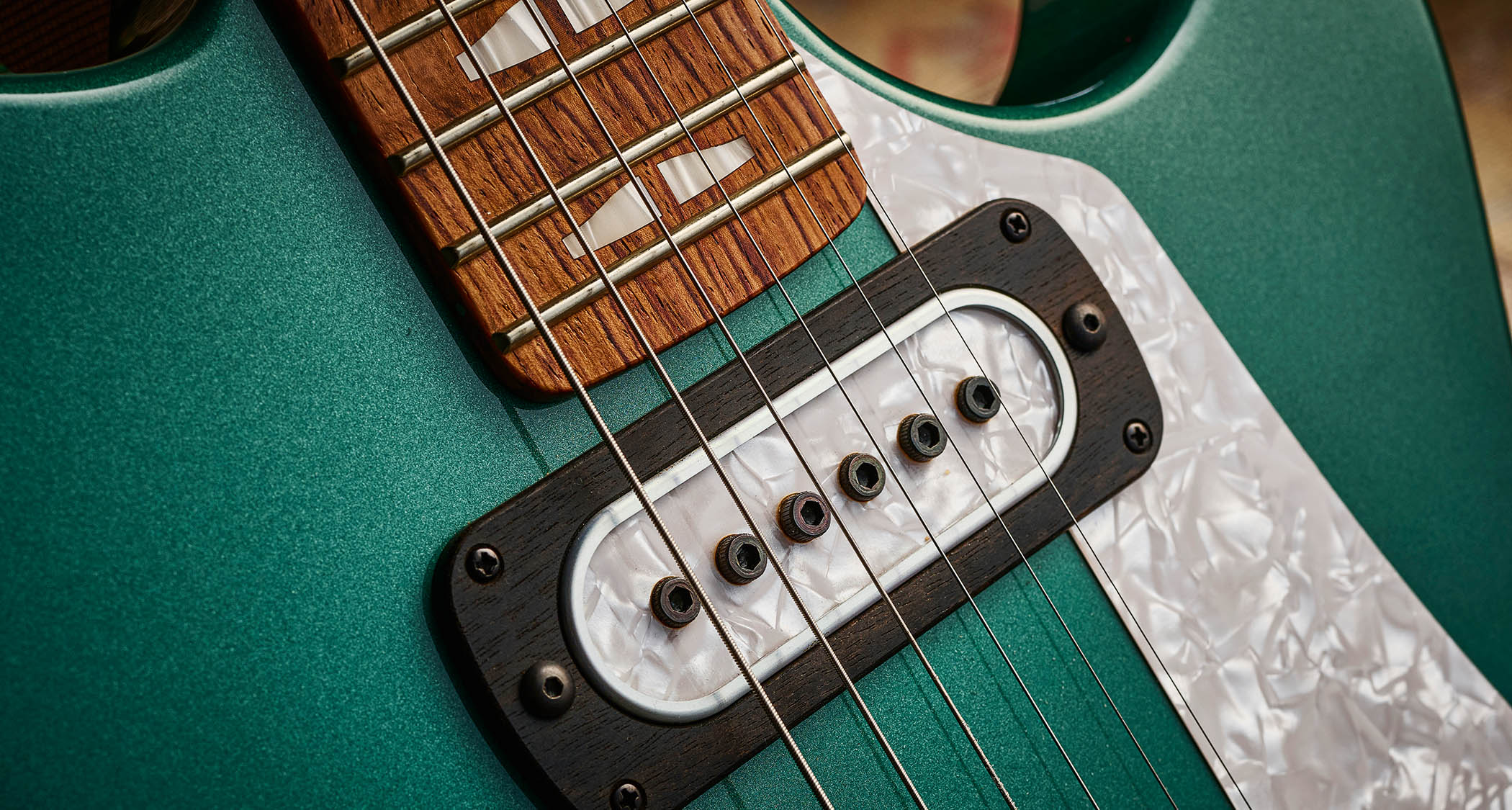
“But with no soundhole, and these two sound-posts that connect the top and back and make them move in parallel, it’s very feedback resistant. So you have the dynamic range and responsiveness of a hollowbody guitar, but [this construction] takes it to a place where it’s not hard to manage on a stage the way a hollowbody guitar can be.
“So this body is built in a very unique way to create this kind of response. But at the same time the neck is also designed and built to contribute to this response.”
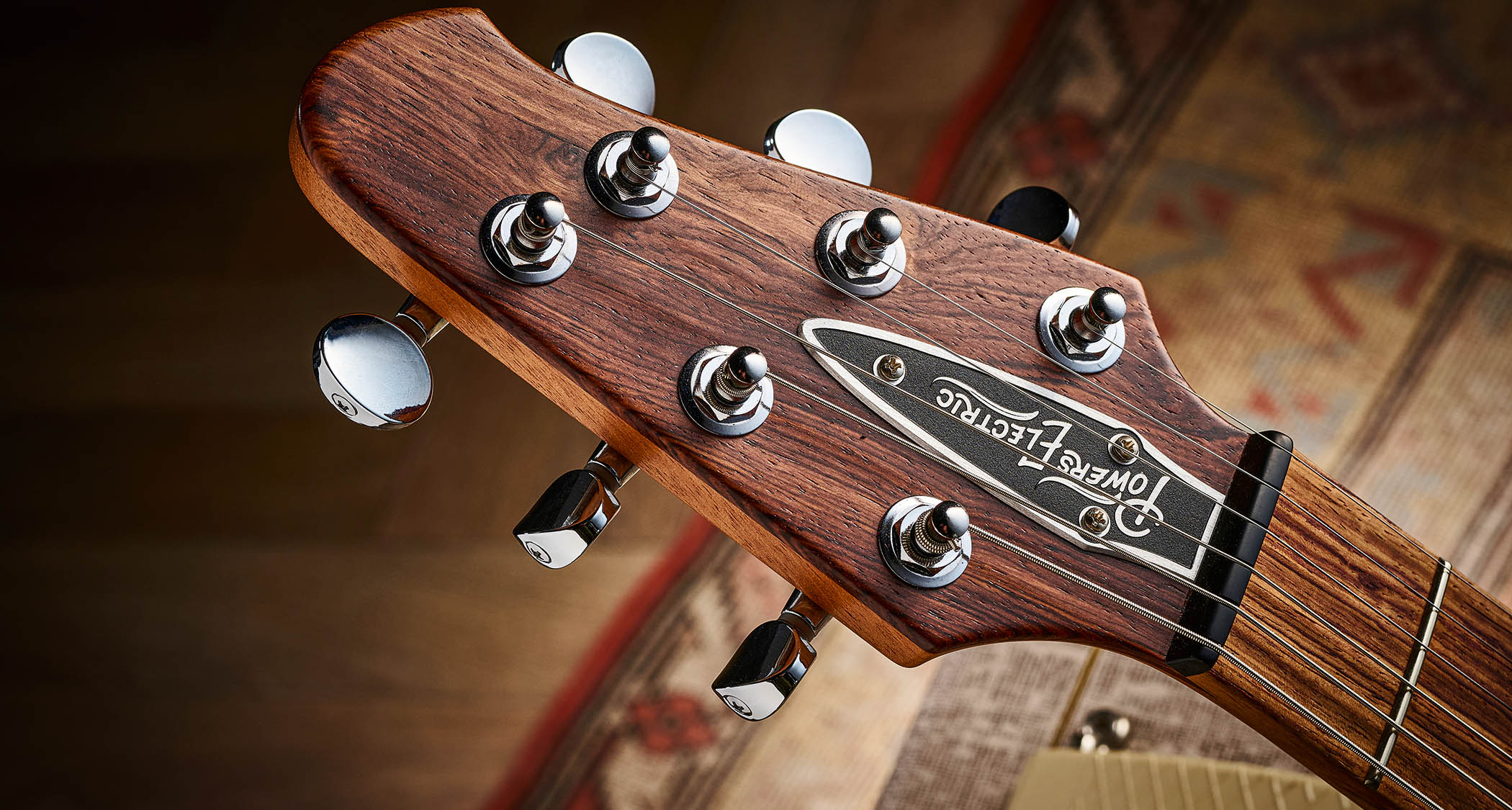
How so? It sort of feels like an acoustic guitar neck.
“Yes, it feels almost like raw wood. Honduran rosewood is one of my favourites. It is one of the most dense rosewoods you can obtain; it’s denser even than most Brazilian rosewoods. It’s hard, like ebony, an incredibly dense wood, but it has a different damping factor than something like ebony. It’s the material traditionally used for a marimba key.
“I’m sure many players think that it’s the pickups that are the main contributor to the way a guitar sounds and, yeah, that’s somewhat true. But if you change what the string does, that changes the guitar.
“So for an electric guitar you’ve got a few elements that all really matter here. What does the string do to begin with? How does the string move? How does it behave? How does the player articulate it? What does the player bring to it? And then you’ve got your circuity, your pickups, all the other components that also matter. But really, everything matters in this case.”

“When you consider the neck of an electric guitar, you’ve got to think of it as one leg of a tuning fork: it’s resonating all over the place. If you change the way that thing resonates, the way that the neck vibrates, you will hear it. So the choice of fretboard wood, that matters.
“The choice of the wood for the main shaft of the neck – whether it’s mahogany or maple or whatever – that matters. It absolutely matters. On an acoustic guitar it matters somewhat less because there are other variables that matter so much more by comparison.
“On an electric guitar, oh man, you’re going to hear that and, importantly, you’re going to feel the difference. The length of the neck, that matters. How it attaches to the body, that matters. The headstock matters..”
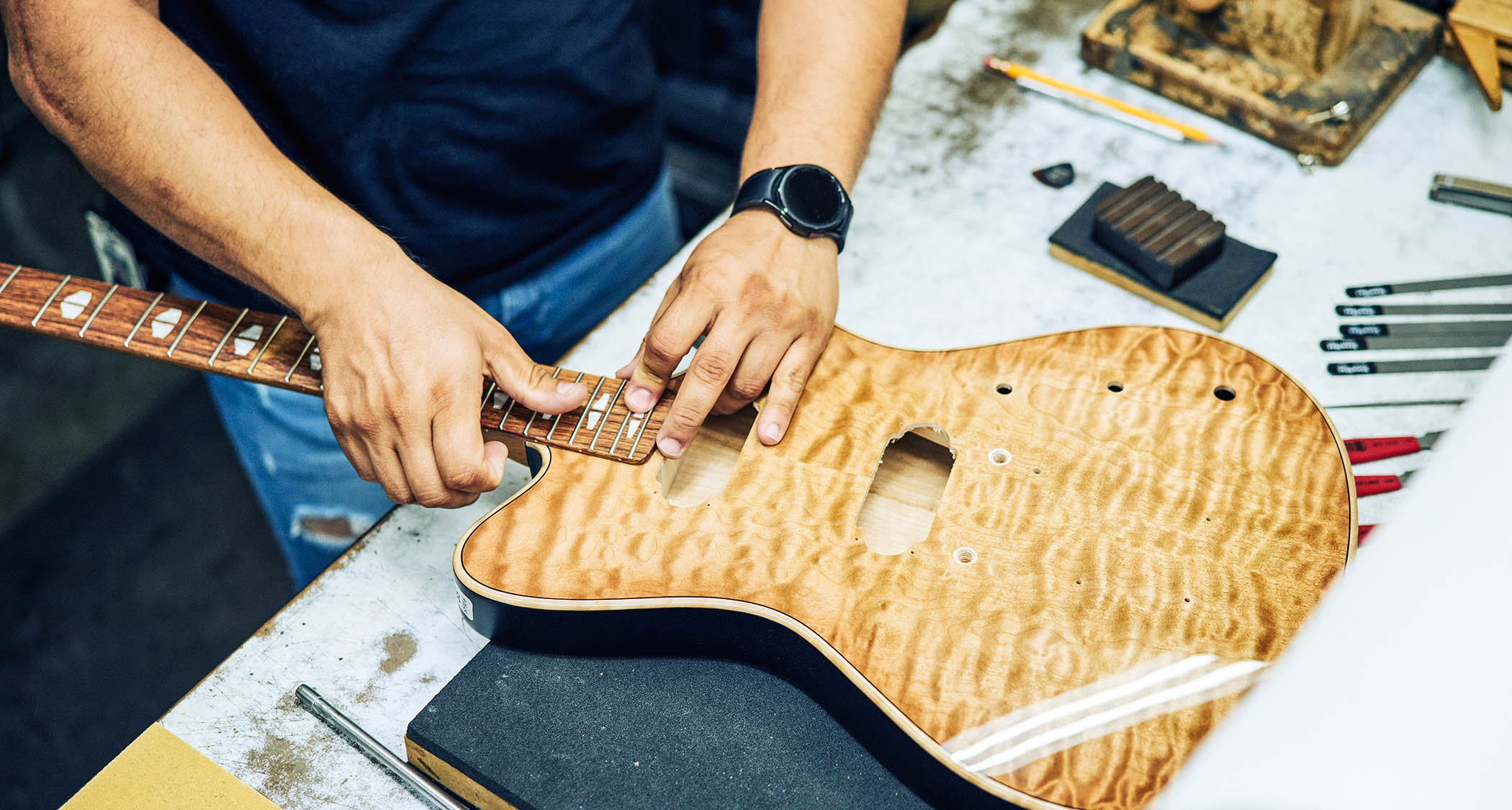
“See, the construction here is interesting. It’s got an extra-thick head plate, what we would call the ‘headstock veneer’. It’s unusually thick and it’s also made from Honduran rosewood, and the headstock veneer and the fretboard are actually bonded to each other – they don’t get pierced by the nut slot, and that creates a sort of different resonance pattern.
“The piece of mahogany under that headstock veneer and fingerboard has been stress relieved so it’s a very relaxed piece of wood underneath it; the entire neck becomes incredibly dynamic. If I take the whole neck before I attach it to the body, and tap it, it sounds like a marimba bar.
“Also, the way the headstock is designed is based around the length of each string between the nut and tuning post – that matters. By the time you put all of these factors together, man, you can just strike the string and go, ‘I like the way this feels, this makes a good sound and it feels good when I hold the thing,’ before we ever even talk about the electronics.”

Speaking which, and continuing our time travel theme, these pickups look like descendants of Paul Bigsby’s designs.
“I started playing with the design some seven to eight years ago. It’s based around an aluminum housing. So, yes, it’s got some element of early electric guitar pickup design. I mean, it’s all very 1930s aero-technology that’s going into the electronics in this guitar! But essentially what I’m doing is using the aluminum housing of that pickup to shape or help control the magnetic field that the string sits in.
“It is a true single coil – there are no dummy coils or anything like that. The modern element is the neodymium magnet – they are very powerful and would be overly harsh in a conventional pickup. But then I can use the magnetic influence of aluminum, which does have magnetic influence.”

“Now, a magnet won’t stick to aluminum, but that just means it’s not ferromagnetic, there’s no iron in it, but there are metals – some forms of brass, copper, aluminum – that are paramagnetic.
“They will become momentarily polarised by a moving magnetic field and in doing that you can use it to control some of the current that’s induced in that coil, you can control the magnetic field a little bit. So that cover is actually shaping the field that the string sits in.
“It diffuses the focus on the string, so when you strike the string you notice that it doesn’t oscillate in irregular ways – it almost looks like there’s not a pickup underneath the string. So the string itself retains a lot of its natural harmonic content and a lot more sustain than it would typically have if I put a different pickup underneath it.”
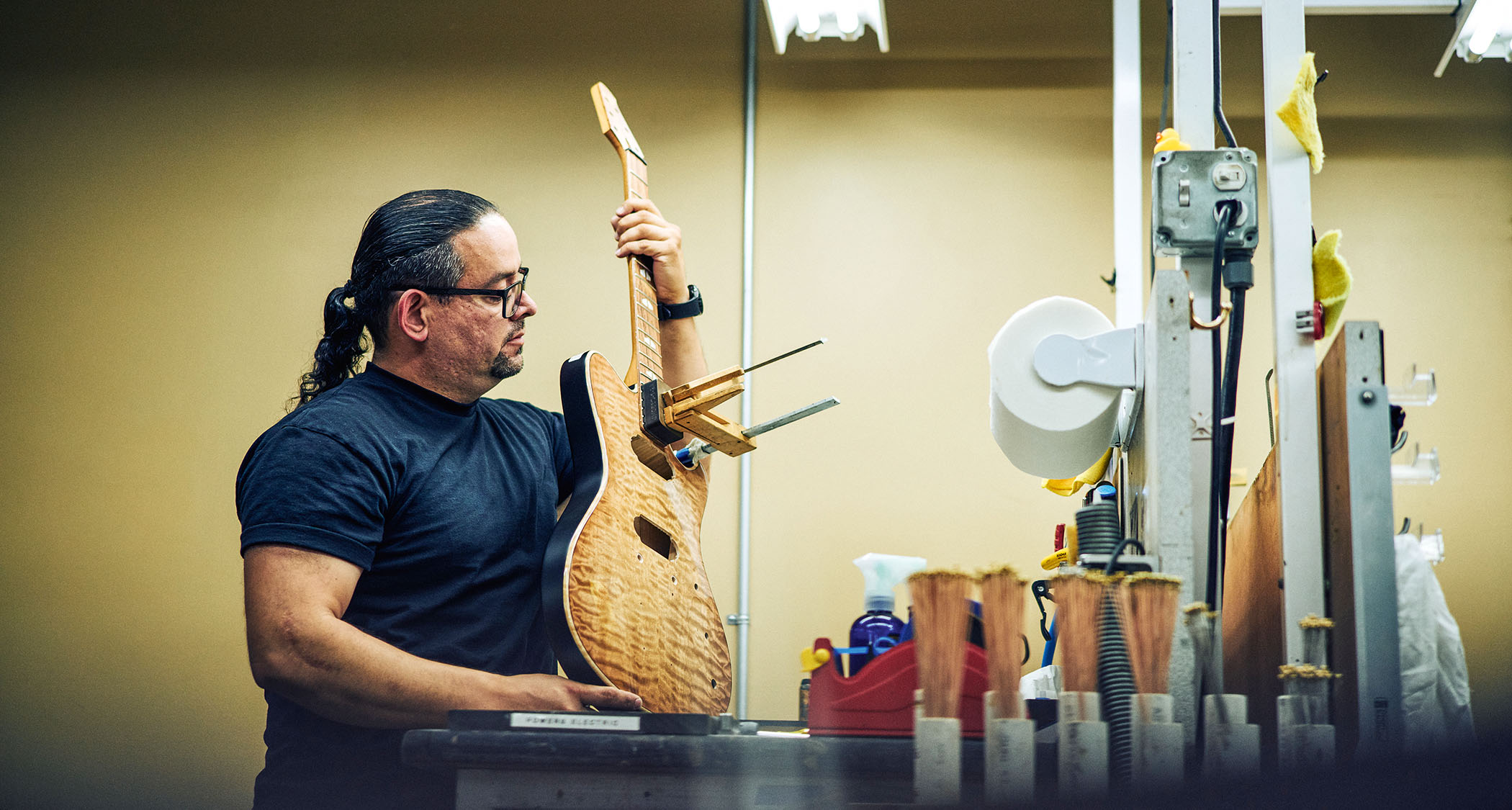
“The sound of the pickup itself is very warm. The first iteration was the ‘Full Faraday’ FF42 that’s completely shrouded in this machined aluminum housing and it uses 42-gauge coil wire. The PF42 ‘Partial Faraday’ has some of the top of the casing milled away.
“It exposes the string to a little more of the direct magnetic field, so it punches up the response and makes an amp sweat a little more. And, to clarify, a Faraday cage is a way to shroud an electric component from electromagnetic interference.”

Like a covered humbucker or those cans Gibson used to put over its pots?
“Yeah, remember those things? But, yes, the pickups tend to run pretty quiet, so we could build a true single-coil pickup and not have any of the resonant peaks or bumps that you can get when you add dummy coils or things like that because that changes the high-end response. But with these casings you can get it to run pretty quiet but still get that linear, smooth response that I want from a design like that.
“Also, the simplicity of the circuit, to me, feels elegant. I like those particular Bourns pots, I like the taper on them, I like the quality. I like that there’s no active electronics or batteries, no extra stuff.”
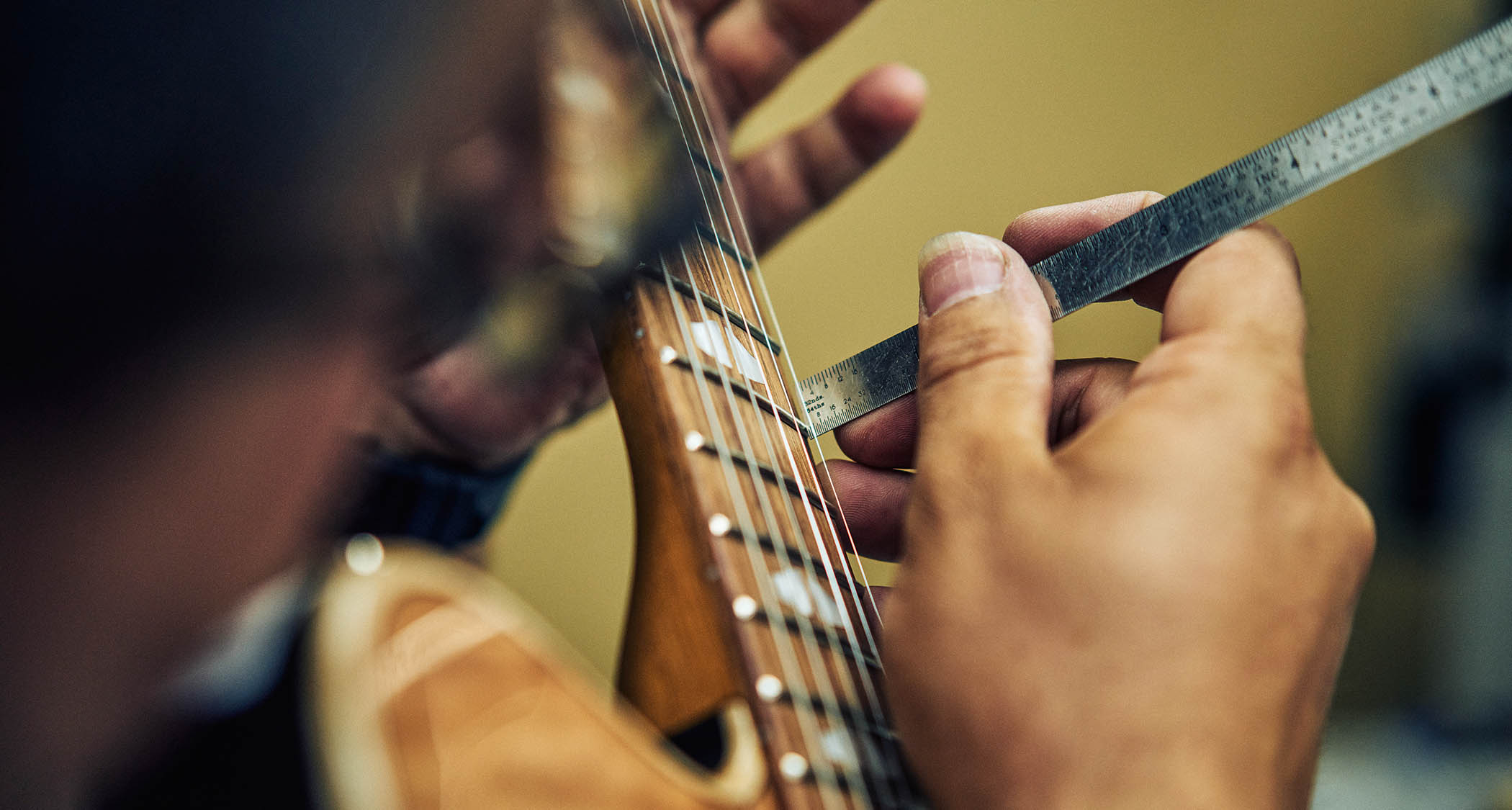
“But I do like to use a tone control, and I’m not always that fond of traditional tone controls where, yes, you can roll the high-end off, which might make sense if you were after a kind of archtop rhythm guitar sound or a sort of muffly thing. But even the jazz players I listen to, no-one is rolling that thing fully off because there’s not much left of the interesting part of the sound.
“But what I want is to use that tone control almost like an overdrive contour control when the amp is breaking up and it’s kinda distorted. You can actually do a great deal of tone shaping by using that tone control because the front-end of most amps will respond in interesting ways.”

I believe you’ve said it was quite purposeful to create a guitar that didn’t quite sound like anything else.
“Yes, it was to underscore all of these different ideas. An idea is great, it’s fun to look at all the different pieces, the minutiae of the design, but the guitar I set out to build for myself was a musical instrument. I wanted to make a sound that was musically useful and inspiring to hear.
I wanted to make a sound that was musically useful and inspiring to hear
“I wanted it to inspire me to play new things, to play and re-examine old things. I wanted it to have a lyrical response. I wanted it to be balanced. I wanted it to be clear and warm. There’s almost a singer-like human voice quality that I want to hear in that guitar.
“You can look at the guitar and say it’s inspired by Southern California, surf boards and hot-rods because, yes, it is. There are different colours, all sorts of detail taken from cars I’ve worked on.
“Could you look at it as an engineering puzzle? Yes, because that’s also fun. Is it an interesting product? Yes, I think so. But ultimately it has to be a fun guitar to play: if it’s a musical instrument that inspires a person to make sounds and play songs and sits well with other musicians, that is the ultimate goal.”

Dave Burrluck is one of the world’s most experienced guitar journalists, who started writing back in the '80s for International Musician and Recording World, co-founded The Guitar Magazine and has been the Gear Reviews Editor of Guitarist magazine for the past two decades. Along the way, Dave has been the sole author of The PRS Guitar Book and The Player's Guide to Guitar Maintenance as well as contributing to numerous other books on the electric guitar. Dave is an active gigging and recording musician and still finds time to make, repair and mod guitars, not least for Guitarist’s The Mod Squad.

